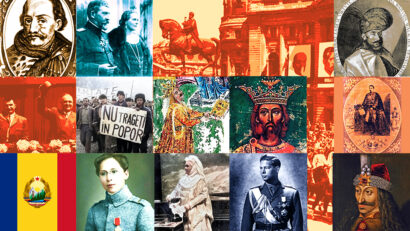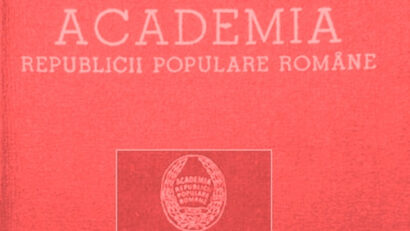The victims of the 1989 anti-communist revolution in Timisoara
The anti-communist revolution of December 1989 remains one of the most tragic events in Romania's recent history.

România Internațional, 12.01.2015, 13:02
The anti-communist revolution of December 1989 remains one of the most tragic events in Romania’s recent history. The human sacrifice that led to the collapse of the communist dictatorship has left a deep scar on collective conscience in Romania. What started as a peaceful protest against the restrictions to religious freedom on the 16th of December 1989 became, on the following day, a spontaneous act of solidarity with and protest against the violation of basic human rights and liberties. On the 17th and 18th of December, army, police and secret service troops opened fire on the protesters. Alexandra Enache, the director of the Institute of Forensic Medicine in Timisoara, was one of the doctors who performed autopsy on the victims. The first action was to inspect the types of wounds inflicted:
“The external examination of the body, including entry and exit wounds, establishes the direction from which the shots were fired. Most of shots were fired from the same height, but from all directions. We found entry wounds on both the front and back of the bodies. Not many bullets were fired upwards, but these were cases when the bullets ricocheted. A report on the trajectory of the bullets was submitted to the Military Prosecutor’s Office, which created an overview in terms of the direction from which the shots were fired. In most of the cases, the victims were standing, as the wounds were on the heads. Some of them were on the move when they got shot and all had gunshot wounds, none had blunt trauma. You cannot possibly defend yourself against a gun by throwing stones and the shooters were at quite some distance from the crowd. Had they wanted to defend themselves, they would have stood minimal chances. We didn’t have data about traumas among the troops that opened fire on the protesters, or cases of stabbing. I remember someone who was said to have died in a car crash, but was in fact killed in the clashes between the troops and the protesters. The wounded weren’t abandoned but carried by the protesters to the nearest emergency rooms. I remember examining four children with ages ranging from 2 to 16 years; they had been shot dead by the riot police and army. All the victims were Romanian nationals.”
Alexandra Enache referred to the identification procedures and the then grim atmosphere in the institution.
”Of the first victims of December 17 that we examined on December 18, 6 corpses were left unidentified. There were very many unidentified victims in the first days. But, based on the examinations made and the notes we took, based on the description and an identikit picture of the corpse, the families managed to identify their victims in the month of December, and also in January 1990 and later on, by means of those notes referring to certain particular body signs or items of clothing. Many of those victims were taken to Bucharest and cremated. We kept all those notes in the form of forensic reports based on which identifications were made. The families read the reports and talked with the forensic medicine experts who had performed the examinations and managed to find elements based on which they could recognize their relatives. The identity papers and other items that the victims had on themselves were initially taken by the employees of the justice department, who also took pictures of the corpses. As far as I know these papers no longer exist, because they were burnt together with the photographic films and other documents which were drafted by the justice department of the militia. The forensic reports which we wrote were the only documents drafted at the time. On December 18th we worked until late to finalize the documents for all the bodies that were examined and which had stayed at the morgue that day. We called it a day only after all reports were drawn up. At the time I was a resident physician. We were under a lot of pressure at the moment, given the times. We were not allowed to leave the county hospital of Timisoara, where the morgue was, through the main gate. After we finished the examinations and having to return to the office, which was in another building, we had to take a secondary exit.”
In January 1990, the documents issued between December 16-18 by the Forensic Medicine Institute of Timisoara were archived, including the post mortem examination reports of the bodies that had disappeared from the hospital morgue. The corpses had been taken secretly to Bucharest and cremated, in a last attempt of the repressive regime to hide the evidence of the massacre they perpetrated against unarmed civilians. 25 years on, questions about what actually happened in Timisoara in those days of December 1989, are still unanswered.




























